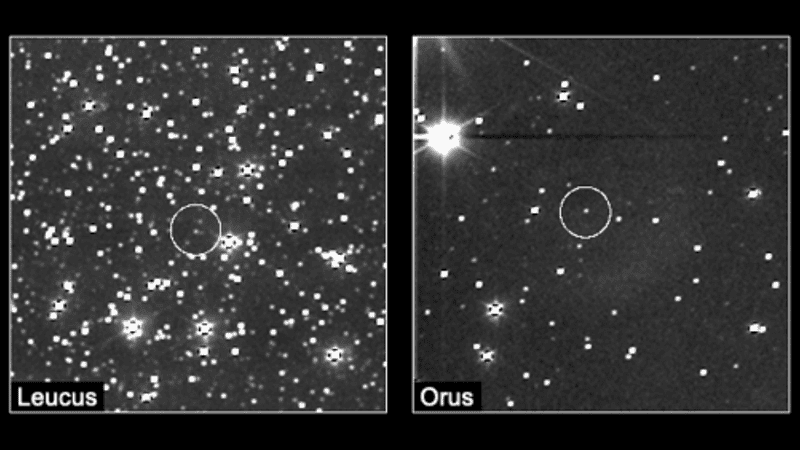NASA's Lucy Spacecraft Spots Jupiter's Trojan Asteroids for the First Time

A NASA probe sent to observe Jupiter’s swarm of asteroids recently caught the first glimpse of its rocky targets, capturing deep-space images of four of the mysterious Trojans.
The Lucy spacecraft used its highest resolution imager, L’LORRI (Lucy LOng Range Reconnaissance Imager), to photograph four Trojan asteroids during a two-day period from March 25 to 27, NASA announced on Thursday. The first asteroids to be seen by Lucy are: Eurybates, Polymele, Leucus, and Orus. Those four are part of two large groups of rocky bodies that lead and follow Jupiter as it orbits the Sun.
Read more
These Winning Close-Up Photos Show Life That's Often Overlooked
Remembering Enterprise: The Test Shuttle That Never Flew to Space
Lucy is still a long way from reaching its asteroid targets, which are currently about 330 million miles (530 million kilometers) away from the probe. That’s more than three times the average distance between Earth and the Sun, according to NASA.
That’s why the first views of the Trojan asteroids are a bit fuzzy, showing the asteroids as a moving speck of light against a dark background littered with stars. The four images show the different orientations of Lucy’s camera as it turned to capture each asteroid.
Each of the Trojans were captured over a different period of time; images of Eurybates were taken over a span of six and a half hours, Polymele’s images were taken over about two and a half hours, Leucus was around two hours, while Orus’ images were taken over 10 hours.
The initial set of images are the first in a series of observations to measure how the Trojan asteroids reflect light when seen from a higher angle than ground-based observations, according to NASA. The images will then help NASA decide on exposure times to use for Lucy’s close-up observations of the asteroids.
Lucy launched in October 2021 and is expected to reach its asteroid targets in 2027 and 2028. The spacecraft will begin its Trojan tour by visiting Eurybates and its binary partner Queta, followed by Polymele and its binary partner, Leucus, Orus, and the binary pair Patroclus and Menoetius. Lucy is expected to travel over 4 billion miles (6.4 billion kilometers) during its 12-year mission, during which the probe will visit 10 asteroids, including a tiny main belt asteroid known as 1999 VD57.
For more spaceflight in your life, follow us on Twitter and bookmark Gizmodo’s dedicated Spaceflight page.
More from Gizmodo
Sign up for Gizmodo's Newsletter. For the latest news, Facebook, Twitter and Instagram.

